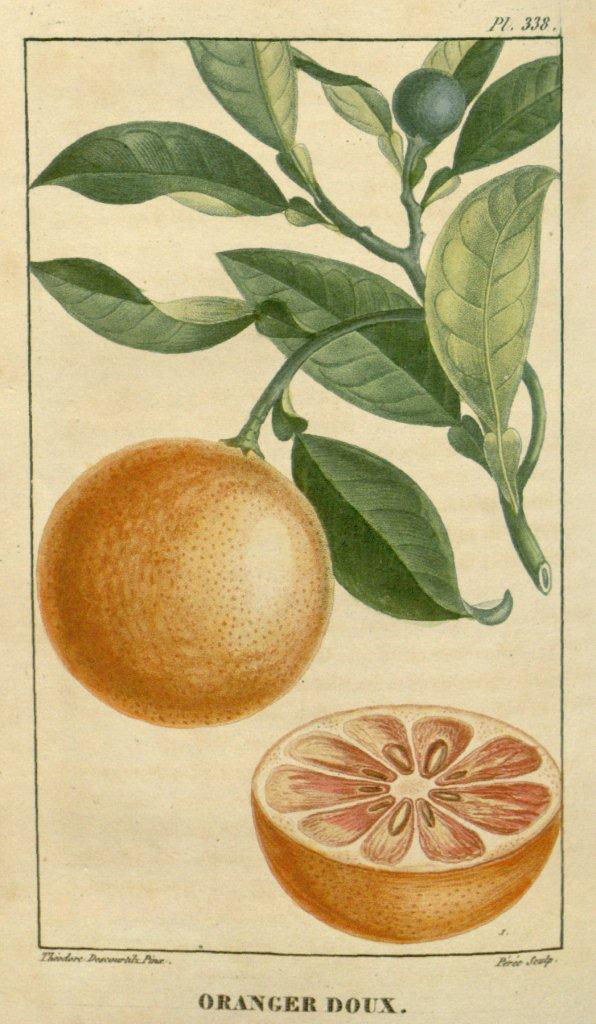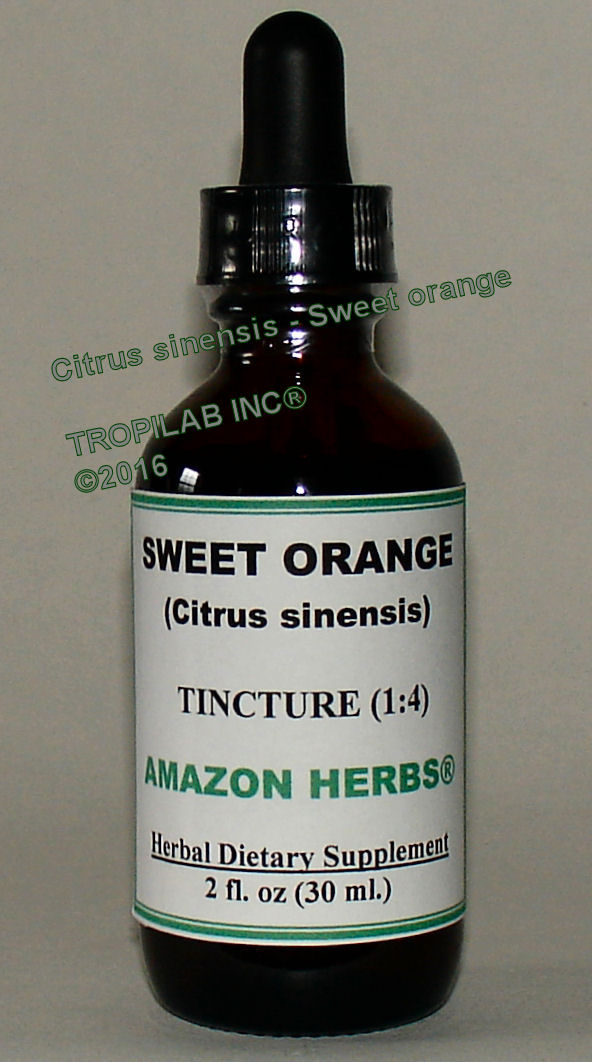Overview
 Citrus peel has been used for thousands of years in Traditional Chinese Medicine.
Citrus peel has been used for thousands of years in Traditional Chinese Medicine.
Orange peel (the outer rind aka zest)) is harvested from the ripened fruit of the Orange tree;
here is most of the Vitamin C located; the peel is aromatic and slightly tonic.
It is also a source of pectin (natural jelling constituent) and an aid in the prevention of indigestion;
it lowers cholesterol and helps in the digestion of fatty foods.
Peel is used as an herbal dietary supplement in the treatment of anorexia nervosa, often referred to as Anorexia
(an eating disorder).
Homeopathically, it is recommended for colds (in the early stage), asthma, constipation, flu, gums, mouth, slow digestion,
and stress. It also shows promise as an anti-cancer agent.
Orange peel can also be used as a flavoring agent and in cosmetics.
Because of its 90 - 95% limonene content, it has a lethal effect on houseflies, fleas and fire-ants.
It is a phyto-chemical that may protect against skin cancer.
Due to the natural vitamin C complex content in the peel, the immune system is boosted!.
Constituents
Carotenoids, Phenolic compounds, essential oils (limonene, citral) Neohesperidin and
naringin, eriocitrin, hesperidin (a flavanone glycoside), flavonoids, flavanone glycosides, flavones, flavonols, potassium,
vitamin B1, choline, folate (vitamin B 9), provitamin A, folate, riboflavin, thiamine, vitamin B6, calcium.
Pharmacology
 The antioxidant and anti-inflammatory activity found in the fractions of Citrus sinensis,
should be attributed to the presence of flavonoids and other phenolic compounds. Among the various
classes of flavonoids: flavanone glycosides, flavones and flavonols seem to prevail.
The antioxidant and anti-inflammatory activity found in the fractions of Citrus sinensis,
should be attributed to the presence of flavonoids and other phenolic compounds. Among the various
classes of flavonoids: flavanone glycosides, flavones and flavonols seem to prevail.
This shows that the ethyl acetate fraction of navel sweet orange peel can be used as an antioxidant in
food and medicinal preparations.
Since citrus peel is rich in flavanone glycosides and polymethoxyflavones, they are important for their
pharmacological properties.
An in vitro study revealed that the compounds, polymethoxyflavones nobiletin, heptamethoxyflavone and
tangeretin, acted as antifungal agents against Penicillium digitatum (green mould).
Limonene and flavonoids seem to have anti-carcinogenic properties. They can block the carcinogenesis by
acting as a blocking agent. Studies have shown that limonin and limonene can induce the enzyme activity
of glutathione S-transferase, which is an important detoxifying enzyme. Feeding of orange oils, rich in
limonene, seem to inhibit tumors of the stomach, lung and mammary tumors.
Due to the present d-limonene, orange peel is effective against heartburn or
Gastro Intestinal Reflux Disease (GERD). Orange peel extract can relieve heartburn symptoms for
many months.
The peel extract also has potential in the regulation of thyroid function and glucose metabolism. Besides antiperoxidative
activity, C. this extract has antithyroid, hypoglycemic, and insulin stimulatory properties, which suggest its
potential to improve both hyperthyroidism (overactive thyroid) and diabetes mellitus.
Applications
Anti-inflammatory, antidepressant, antiseptic, bactericidal, carminative, choleretic,
digestive, fungicidal, hypotensive, sedative (nervous system), natural stimulant, stomachic, tonic.
Reduces phlegm and treat coughs.
Against acid indigestion (dyspepsia), works against high blood pressure and treats cancerous breast sores.
Kidney stones prevention is also an application.
Dosage
Tincture: 1 - 3 ml. daily.
Check with your homeopath.
Reference
RHS Dictionary of Plants plus Supplement.
F. CHITTENDON, 1956
Oxford University Press 1951
Comprehensive listing of species and how to grow them.
Growing Unusual Fruit
by Simmons. A. E. (David and Charles 1972 ISBN#0-7153-5531-7)
Dictionary of Economic Plants. by Uphof. J. C. Th. (Weinheim 1959 ISBN#-)
A Dictionary of Plants Used by Man. by Usher. G. (Constable 1974 ISBN#0094579202)
Radical scavenging activity of various extracts and fractions of sweet orange peel (Citrus sinensis).
Anagnostopoulou,-M.A.; Kefalas,-P.; Papageorgiou,-V.P.; Assimopoulou,-A.N.; Boskou,-D
Food chemistry. 2006 Jan., v. 94, issue 1 p. 19-25.
Citrus paradisi and Citrus sinensis flavonoids:
Their influence in the defence mechanism against Penicillium digitatum A. Ortuño, A. Báidez
a, P. Gómeza, M.C. Arcasa,
I. Porrasb, A. García-Lidónb and J.A. Del Ríoa
a Departamento de Biología Vegetal (Fisiología Vegetal), Facultad de Biología, Universidad de Murcia, E-30100 Murcia, Spain
b Departamento de Citricultura, Instituto Murciano de Investigación y Desarrollo Agrario y Alimentario (IMIDA), La Alberca, E-30150 Murcia, Spain.
Medicinal values of fruit peels from Citrus sinensis, Punica granatum, and Musa paradisiaca with respect to
alterations in tissue lipid peroxidation and serum concentration of glucose, insulin, and thyroid hormones.
PARMAR HS, KAR A.
School of Life Sciences, Devi Ahilya University, Indore, MP, India
The above presentation is for informational and educational purposes only.
It is based on scientific studies (human, animal, or in vitro), clinical experience, or traditional usage.
For many of the conditions discussed, treatment with prescribed (RX) or over - the - counter (OTC) medication is also available.
Consult your doctor, practitioner, and/or pharmacist for any health problem and before using dietary supplements
or before making any changes in prescribed medications.
|

